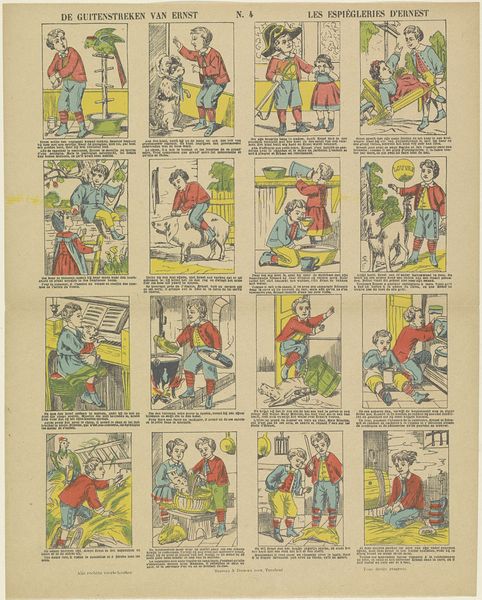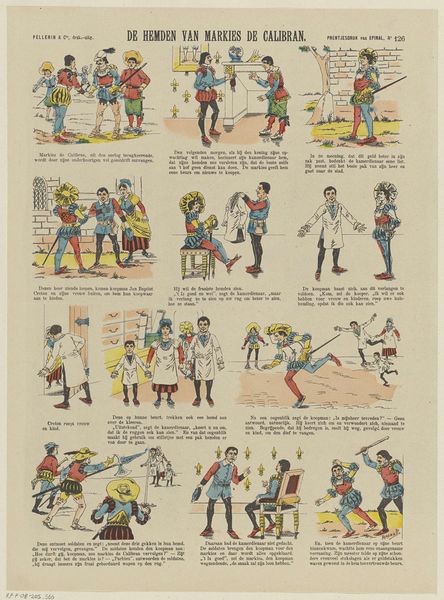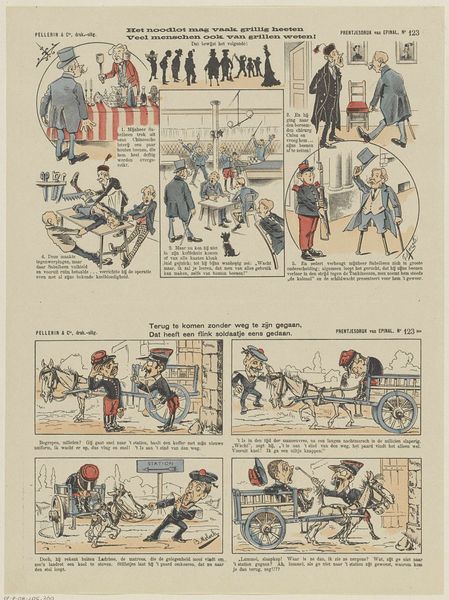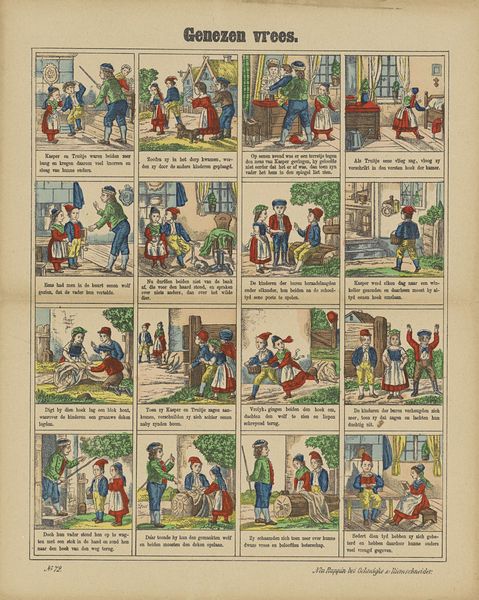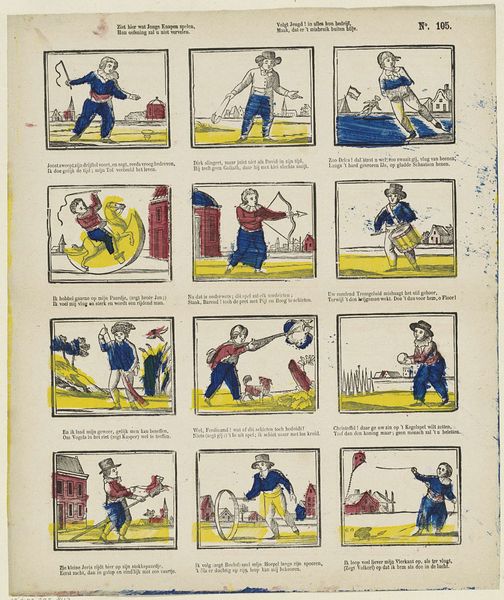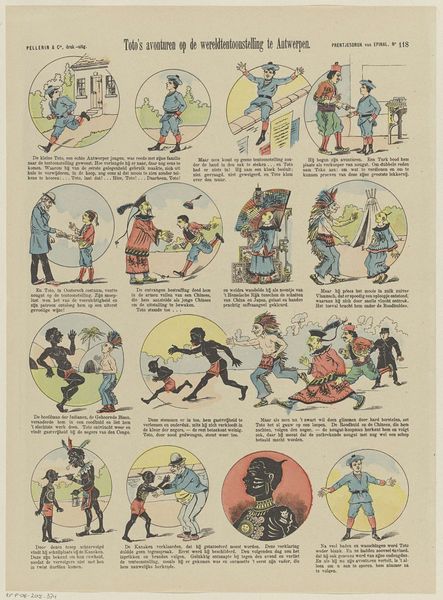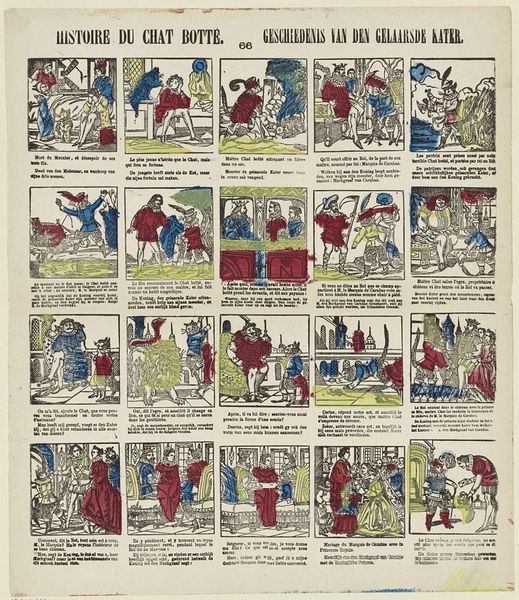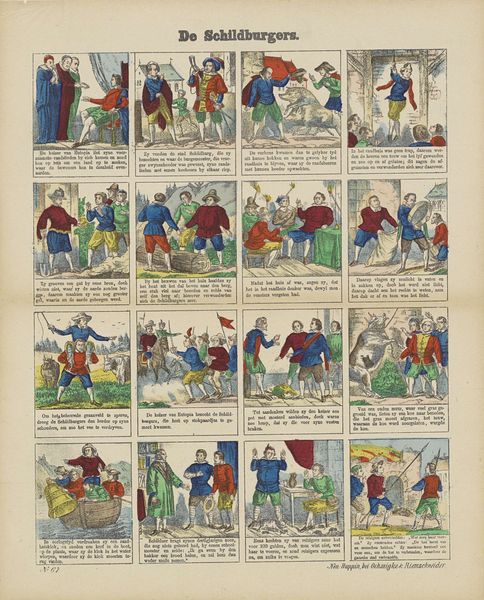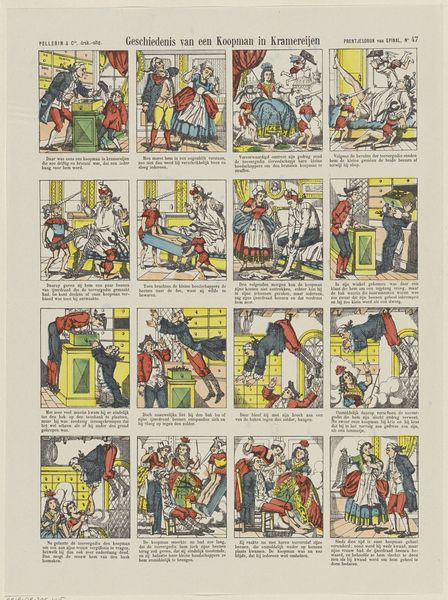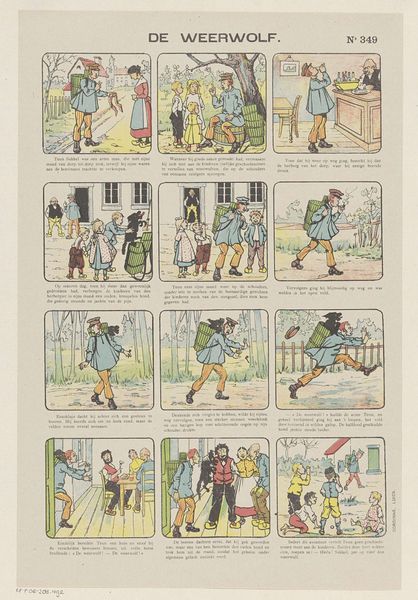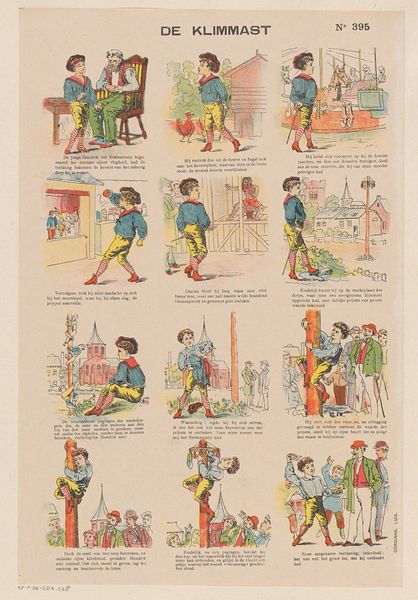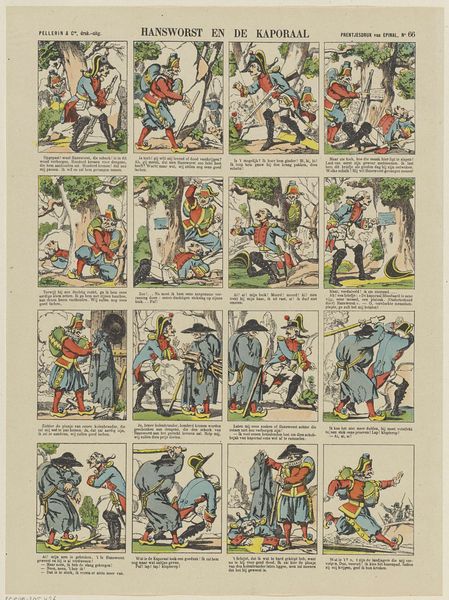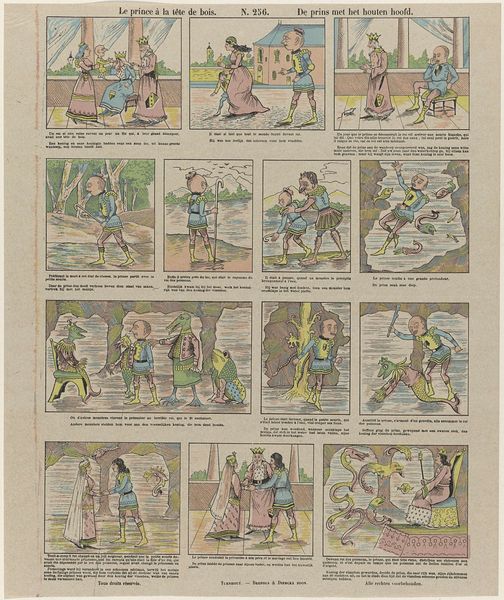
lithograph, print
comic strip sketch
aged paper
narrative-art
lithograph
comic
genre-painting
Dimensions: height 399 mm, width 294 mm
Copyright: Rijks Museum: Open Domain
Editor: So, this is “Wimpje moedwil, of de kleine deugniet”, or “Wimpje willful, or the little rascal” created sometime between 1869 and 1888 by J.H. van (II) Wees. It’s a lithograph, like an early comic strip. It definitely has a moralizing tone. What sort of symbolic weight do these playful panels carry for you? Curator: These aren’t just lighthearted vignettes. They echo archetypes of childhood mischief that resonate across centuries. The disruption of order, the defiance of rules – these acts tap into primal urges for exploration and the testing of boundaries, very basic forms of understanding how society works. Look at the boy riding the pig. What does that conjure? Editor: Well, a certain freedom, lack of concern, or just thinking that normal rules don't apply to you... perhaps those are aspects of growing up? Curator: Exactly. The pig itself could symbolize base instincts or the rejection of societal norms. And what of the interaction with the pets in several frames? Consider the psychological underpinnings of the relationships – domination, companionship, or even cruelty, are visible everywhere. These panels act as mirrors, reflecting societal expectations and fears around childhood, the idea of innocence. Is he really innocent? Is innocence even desirable? Editor: That's interesting. So the scenes with the animals… it’s more than just a cute image. The relationship itself embodies broader social or psychological themes. I'd been too quick to assume it was just lighthearted entertainment. Curator: It reminds us that images are never neutral. They carry cultural DNA within them, subtly shaping our understanding of the world, of ourselves. Think of how such symbols have evolved – or haven't – since the 19th century. Editor: Right, these old tropes of childhood behavior still have relevance today. Curator: Yes, recognizing these visual legacies helps us see our own biases and assumptions. Editor: I hadn't considered how potent seemingly simple narrative art can be!
Comments
No comments
Be the first to comment and join the conversation on the ultimate creative platform.
